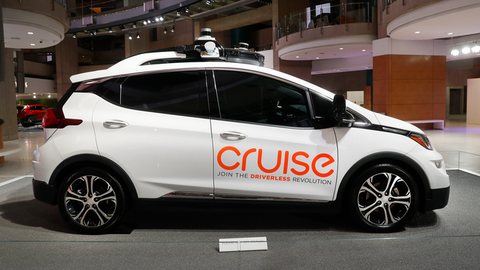
California Regulators Approve States 1st Robotic Taxi Fleet
The world of taxis is changing, and California is taking its place at the forefront of this change by rolling out the first robotic driverless taxi fleet into its streets.
Finally, after years of trials and delays, the first robotic driverless taxi fleet got an unprecedented permit from the California government. The company in question is Cruise, a General Motors subsidiary, it will start its operations in San Francisco where many companies have tried to work before, but technical difficulties and safety concerns prevented that from realizing. Even Cruise is still struggling with their cars, latest trials showed that the robotic taxis were unable to pick up or drop off passengers at the curb, and had to double park instead.
Because of that, the California Public Utilities Commission has granted the permit under several limitations.
The fleet will be limited to 30 units and they will operate exclusively in less congested parts of San Francisco from 10 p.m. to 6 a.m. only, and the fleet will be prohibited from operating during heavy rains or fog. These limitations will minimize the risk of accidents that may occur because of extreme congestion on busy roads and the cars’ inability to react properly to that.
Cruise is no stranger to robotic taxis, it has a substantial experience with them, the difference is that previously the company had to put a human driver in the car to control it in case something goes wrong, while now the only humans present in the car will be passengers.
Gil West, Cruise's chief operating officer, welcomed California’s decision in a blog post, saying “a giant leap for our mission here at Cruise; to save lives, help save the planet, and save people time and money”
Companies like Cruise and Waymo hope to attract more attention to robotic taxis by proving that they make taxi rides less expensive while reducing the traffic accidents and deaths caused by reckless human drivers.
But public concern persists. Ryan Russo, the director of the transportation department in Oakland, California expressed those concerns by saying; “Many of the claimed benefits of (autonomous vehicles) have not been demonstrated, and some claims have little or no foundation,”
So, this first step will give Cruise the perfect opportunity to prove the safety and efficiency of its robotic taxis, and it will give the authorities the chance to assess the technology’s performance in the real world, and elevate any existing safety concerns. Allowing it to expand its operations to other parts of the city and perhaps encourage other cities to grant them similar permits.
Reaching this stage was no easy task, many companies have struggled for years to reach the operation phase. Uber for example was hoping to run 75,000 self-driving cars in 13 different cities by 2022, but technical problems and legal issues forced it to abandon the project altogether and sell the autonomous driving division to Aurora in 2020. Tesla too promised to have a functional robotic taxi fleet by 2020, but that’s still just a promise even today.
At this rate, driving may become a thing of the past. But the need to maintain and take care of your car will never change. Cars are vulnerable to weather conditions, dust, spills, and other risks, that’s why owning a high-quality custom-made cover from Coverking is a must!
Coverking products will ensure your car’s complete protection against extreme weather conditions, doesn’t matter if you need covers for the exterior body, seats, dashboard floors, or windshield. Coverking got you covered, literally!



